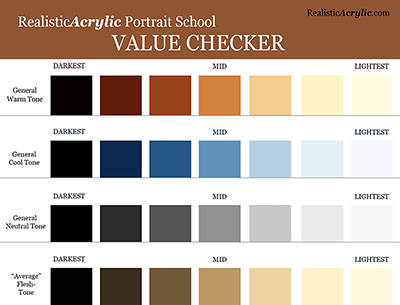All posts by Matt Philleo
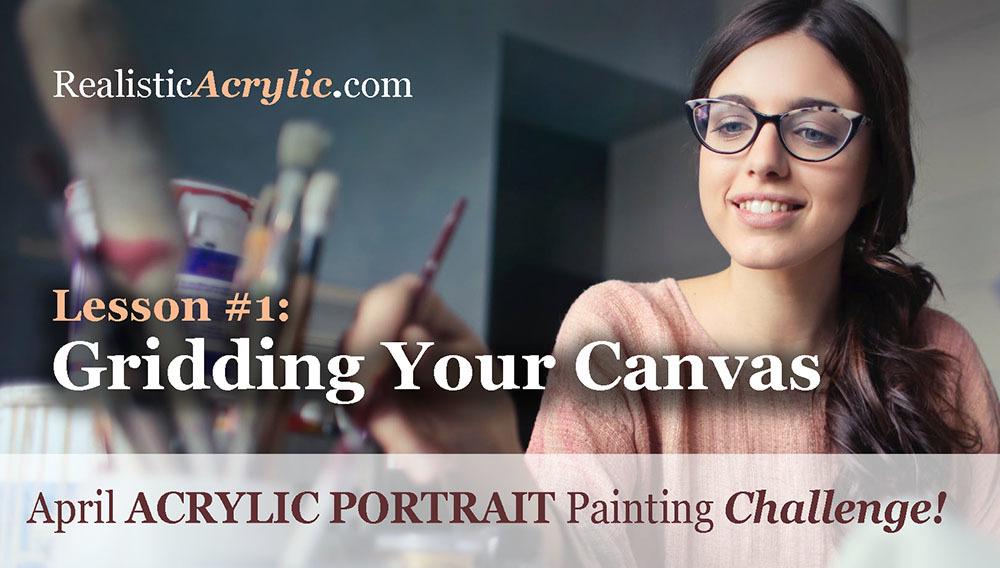
[PORTRAIT CHALLENGE] Masterclass Lesson #2: Sketching Your Portrait for a Firm Foundation
Masterclass Lesson #2 for the Acrylic Portrait Painting Challenge is open!
In this lesson, you will learn how to draw an accurate sketch that will help keep you from getting frustrated while painting. You will also be set up to create a portrait with realistic proportions, and a true likeness—where it really looks like the person you’re trying to paint.
That’s the kind of portrait you’ll be proud to show, sell, or give as an exquisite gift!
Just as a contractor wouldn’t build a house without a proper foundation, you shouldn’t paint a portrait without one either. A rock-solid sketch is the best way to establish a firm foundation for the rest of your portrait to be built upon. Take your time to do it right, and you will set yourself up for success, and avoid a lot of potential hassle later.
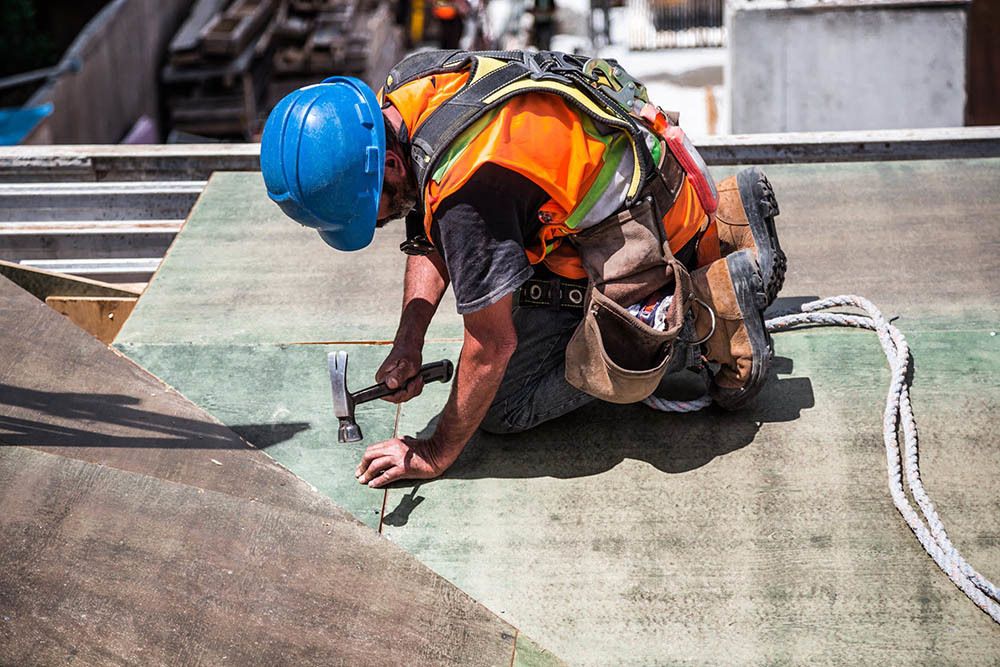
Sketching as a firm foundation for your portrait.
In our previous step, I showed you how to prepare your canvas for the sketch by creating a well-formed grid.
If you followed my instruction, you will have sealed that grid with first a layer of matte medium. Then you followed up with a roughly 50%/50% mixture of acrylic matte medium and white acrylic gesso, and let it dry for at least a couple of hours.
Now, you have a canvas that is ready to sketch upon. The matte medium/ gesso layer provides not only a barrier to the grid so you can’t erase it while sketching, but it also gives the canvas the perfect texture to sketch with a colored pencil. Back in 2017, I discovered that colored pencil erases like a dream on a properly prepared canvas. And you can seal it in without minimal loss of detail to your sketch.
Try it, and you’ll find out how fun it can be to sketch on your canvas. 🙂 You’ll never want to go back to graphite pencil again!
Another benefit: you can pick any colored pencil hue you want to match the skin tone of the subject. Remember, with my glazing technique, you will be able to see through the paint layers, down to the colored pencil until you have enough layers to cover it up. And in a few areas, even when your painting is finished, the colored pencil will shine through a bit. So pick a brown color that works best for you. Sepia, Chocolate, brown ochre, and terra cotta are all good colors for sketching.
Ready to go?
Now, before we begin…
Are you registered for the challenge?
If not, register below for FREE and I’ll send you:
- a downloadable/ printable”Welcome Kit” with a Supplies List and a Palette Color Layout Guide.
- high-resolution images of the photo we’ll be painting from for this challenge.
- each new lesson that comes out in this Masterclass series.
- a link to my private Facebook group, where you can do this challenge with other artists, get feedback and help on your portrait, and not feel alone.
REGISTER TODAY. The challenge is ongoing, something you can do at your own pace. It’s not too late to enter!
Register for the Challenge!Here’s the steps to creating a masterful sketch, a firm foundation for your painting.
- Set up your tablet (Kindle, iPad, etc) or printed reference photo next to your canvas, and display the gridded reference photo. Need something to hold your tablet up? My free course shows you how to make your own Reference Photo Holder) The reference photo is your blueprint to paint a portrait from your photo. It’s what your finished painting should look like.
- Sketch the outline first. Pay attention to where you are placing your lines. Try to see the grid squares as fractions. (“the line will intersect here at 1/4 of the way up, or 1/2 of the way over, etc”
- Fill in the features, loosely: eyes, nose, mouth, etc. The eyes are the most important feature, so really make sure you capture the shapes of not only the eyes, but the eyelids and eyebrows.
- Delineate the tonal values. Shade in the areas that are darker, and pay attention to exact forms that the shadows create. Try to think of them as abstract shapes like stretched out triangles, oblong ovals, squished rectangles, for example. As you fill in these values, the planes of the face will start to emerge. You will create a convincing sense of three-dimensional form.
- Refine your sketch and add any missing detail. Step back a bit and make sure you have the proportions correct. The grid will have done the “heavy lifting” for you, by keeping your lines pretty accurate. But you might need to erase and redraw some of the features for greater accuracy. Finish up with the wrinkles in the clothing and on the hat, if needed.
Watch my in-depth Masterclass acrylic online tutorial below to see these steps in action.
After learning from this video, You’ll know exactly how to do it.
Before you watch, I want you to know that this lesson is VERY in depth. It’s one hour long! But please, make the investment in your art talent, grab a cup of coffee or tea, and watch the whole thing. If you do, I promise that you will have greater clarity on how to begin an acrylic portrait from here on out. Every portrait you do will be that much better.
Here’s the video…
Acrylic Portrait Challenge Masterclass Lesson #2: Sketching Your Portrait for a Firm Foundation
Is it done?
How accurate does it need to be? You only need to have a likeness 90% of the way there to have a fantastic sketch.
It doesn’t have to be perfect. The painted layers will dial in the likeness the rest of the way. You don’t need to make this sketch into a drawing. Meaning, you don’t need to shade in everything to the point that it looks like a finished drawing that you could hang on your wall.
No.
The sketch is for YOUR benefit…and also that of the portrait!
It doesn’t have to amaze others at this stage. It just needs to be accurate. It needs to describe the form, the contours, the three-dimensionality of the subject with line and value. You simply need to make yourself a guide so you know where to place your glazes when you segue into the painting process.
Now the painting, when it is finished, let THAT amaze others! (and you 🙂 )
There you have it! Now you know exactly how to create a great sketch for your portrait, a firm foundation you can build the rest of your portrait upon. The next step is to seal in your sketch and ease your portrait into a painting with the first few glazes.
I’ll see you in our next class! Until then have a blessed day and use that talent God gave you to its fullest!
Yours for Better Portraits,
![]()
If you found this post helpful or encouraging, would you send it on ahead? Let others know with the share buttons below. I’d love to hear your comments. Thank you so much!
Let me know if you have any questions about the challenge that I didn’t answer. Leave your question in the comments below and I’ll get back to you!

[PORTRAIT CHALLENGE] Masterclass Lesson #1: Gridding Your Canvas for an Accurate Sketch
I’m so excited to be teaching you the first Masterclass Lesson for the Acrylic Portrait Painting Challenge!
Again, if you are taking the challenge, I commend you. It’s not easy to paint a portrait. Many artists desire to do it, but never actually begin, because it’s difficult to paint a fellow human being accurately. It’s my goal to show you how to do it, so you can paint an amazing portrait from a photo you’ll be proud to show others.
Now, you might feel like rushing this step, but I encourage you to start slowly and build a good foundation for your portrait. You’ll be glad you did.
Before we begin…
Are you registered for the challenge?
If not, register below for FREE and I’ll send you a “Welcome Kit” with a Supplies List and a Palette Color Layout Guide. I’ll also send you high-resolution images of the photo we’ll be painting from for this challenge. (It’s not too late to enter!)
Register for the Challenge!In this video lesson and tutorial, you will learn how to create a grid for your canvas. If you have several years of freehand drawing experience, you could skip this step and start sketching right away, but from my experience in teaching, most artists are not ready to do an accurate sketch for their portrait.
So, most likely, the grid method will be best for you. It allows you to create accurate proportions while still compelling you to use your hand-eye coordination and spatial perception to draw shapes and detailed forms. And that’s how I will be teaching this portrait demonstration for you.
There’s three steps to creating the grid in preparation for sketching:
- Draw it.
- Seal it.
- Mute it.
I’ll show you how, step-by-step, in this video lesson…
And now you know how to create a grid on your canvas, and you’re ready for the next step: sketching the subject! I look forward to being your guide for the rest of this adventure.
I’ll see you in our next class! Until then…
Yours for Better Portraits,
![]()
If you found this post helpful or encouraging, would you send it on ahead? Let others know with the share buttons below. I’d love to hear your comments. Thank you so much!
Let me know if you have any questions about the challenge that I didn’t answer. Leave your question in the comments below and I’ll get back to you!

[ACRYLIC PORTRAIT PAINTING CHALLENGE] What We Will be Painting!
Here is the reference photo we will be painting from for the challenge!!
I’m excited! What a photo–from the challenging and interesting 3/4 angle of the head, to the light and shadow, the pleasant expression, the form of the hat, the blurry background, it will make for a great painting!
And we will be doing it together!

Realistic Acrylic Portrait Painting Challenge
To get the version with a grid overlay, plus the supplies list and all the instructional videos, REGISTER here>>> https://realisticacrylic.com/acrylic-portrait-painting-challenge/
Yours for Better Portraits,
![]()
If you found this post helpful or encouraging, would you send it on ahead? Let others know with the share buttons below. I’d love to hear your comments. Thank you so much!
Let me know if you have any questions about the challenge that I didn’t answer. Leave your question in the comments below and I’ll get back to you!
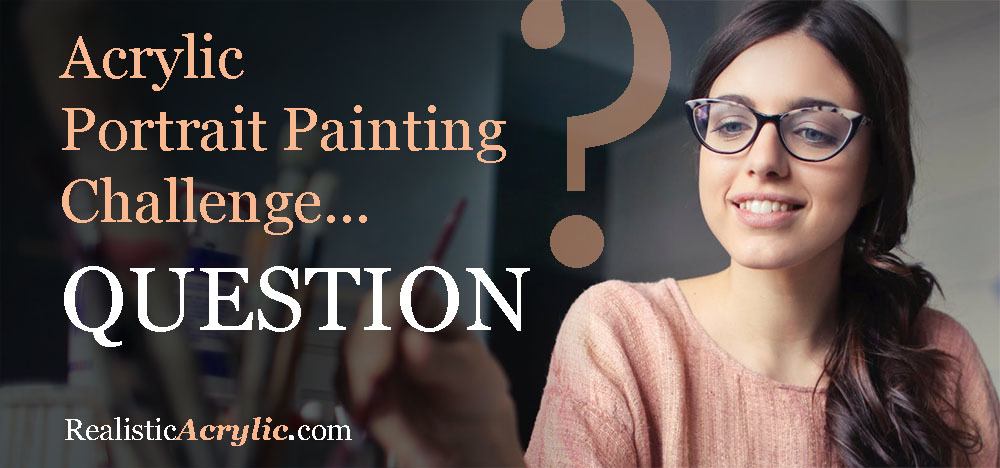
Portrait Painting Challenge, Q & A
It’s been an exciting week so far with so many people signing up for the Acrylic Portrait Painting Challenge!
With that, I’ve received a lot of questions. I want to take a moment and answer some of them, so that if you it’s your question too, well, you’ll have an answer! Some of the questions are ones that I am anticipating as well….
1. When does the challenge actually start?
Right now, people in my Facebook group are voting for their favorite image until tonight. Once we have the final reference photo, selected, I’ll put a grid overlay on it, and then email it to you here tomorrow (4/8). We will begin the next day, Thursday, April 9th.
2. What if I’m not on Facebook? Can I still participate?
Yes! You can still paint along with us, and keep in touch with me via email. Click here to REGISTER and get your “Welcome Kit” with the supplies list. It’s not too late.
3. What if the photo I like most doesn’t get picked?
Well, I set this challenge up in a democratic way, so that everyone would get involved and vote collectively as a group. Unfortunately, we won’t all get to paint a portrait from the photo we liked most, myself included. But I think we can still recognize the value of painting the final choice image, because all of them are fantastic options, with their own unique qualities.
Also: I will be saving these “runner-up” images for a future challenge or painting class. So I think we’ll have another shot at painting them!
4. Where are you posting the step-by-step demonstration videos?
I will be posting them to Realistic Acrylic Portrait School, on my blog. The videos will be hosted on my YouTube channel, Fine Art by Matt Philleo
5. Is this free?
Yes, the challenge, the Welcome Kit, the video lessons, all of that is free. I want to bless you during this challenging time and allow as many to participate as possible. I will have some additional benefits for you if you are a Realistic Acrylic All-Access Member. If you want to check that out and consider joining if you aren’t already a member, click here to learn more.
6. I can’t find some of the colors on the supplies list. Are there substitutes?
Yes. If you look at the last page of my Welcome Kit, you will see an image of my palette, with all the colors arranged it. Look at it and match up a color that you have on hand that looks close. For example, Raw Umber mixed with a little Ivory Black should work as a substitute for Raw Umber Dark.
7. I can’t find Organic Red Orange on Nova Color’s website. Where is it?
That is my mistake. It is actually called, “Organic Pyrrole Orange.” I have called it Organic Red Orange for the longest time, because it is truly a red-orange pigment, and it differentiates it from other straight red or orange colors on my palette.
8. How often are you going to post instructional videos?
On an almost daily basis. You will be hearing from me very often. If for some reason you feel you are getting too many emails, you can opt-out of the challenge here, and I will not email you anything more about the challenge, no hard feelings. 🙂 And you will still be on my art tips newsletter.
9. What if I get behind on the challenge?
No worries. This is not a race. Think of it more like a group painting party, but where the doors never close. 🙂 You can just keep working at your own pace. The videos will still be there for you to access later.
10. When will the challenge end?
I am shooting to have it done by the end of April, but we are getting started a bit later than I thought. So it might go into the first week of May. I’ll be keeping in touch with you to let you know when we get closer to that time.
Okay, that’s it for now!
I hope this clears up any questions you have. But if you have more questions, shoot me an email and let me know. I’ll be happy to answer you personally.
I’m so excited to start the challenge with you. Look for an email from me tomorrow with the announcement on the reference photo we will be painting from, and a downloadable version with a grid overlay that you can paint from.
Look forward to seeing you in the challenge!
Yours for Better Portraits,
![]()
If you found this post helpful or encouraging, would you send it on ahead? Let others know with the share buttons below. I’d love to hear your comments. Thank you so much!
Let me know if you have any questions about the challenge that I didn’t answer. Leave your question in the comments below and I’ll get back to you!
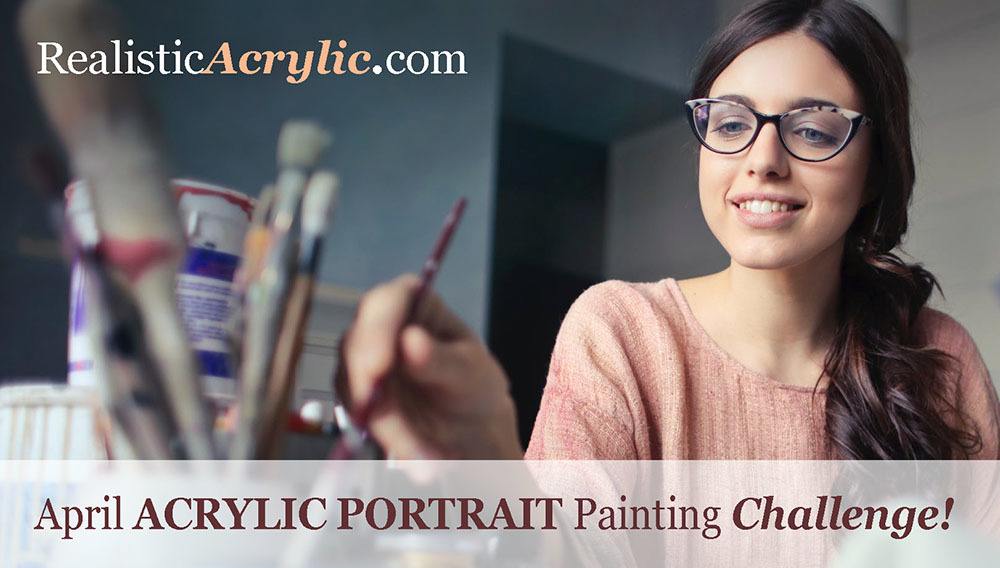
3 Reasons to take the Acrylic Portrait Painting Challenge!
As I type this, we’re in the middle of the COVID-19 crisis. You know that.
Every challenge presents opportunities. This is one of those occasions. Many of us have more time on our hands, so I decided to open up a portrait painting challenge!
Why not use this extra time to create something beautiful—an acrylic portrait we can be proud of. I want to give you three reasons why you should take the challenge…
- You’ll have the opportunity to walk away with a fantastic acrylic painting you can be proud to show others.
- You will sharpen your skills as a portrait painting artist that you can use for future portraits.
- You will be able to encourage other artists in a sense of community, and that will help you feel connected in a time of isolation.
This challenge is FREE to join and I also plan on teaching you step-by-step, with video instruction, precisely how to paint the portrait.
Would you like to join me and many other artists on this challenge?
Great! Watch this video…
Then, sign up for the challenge below.
I’m interested in the challenge!Look forward to seeing you in the challenge!
![]()
Matt
If you found this post helpful or encouraging, would you send it on ahead? Let others know with the share buttons below. I’d love to hear your comments. Thank you so much!
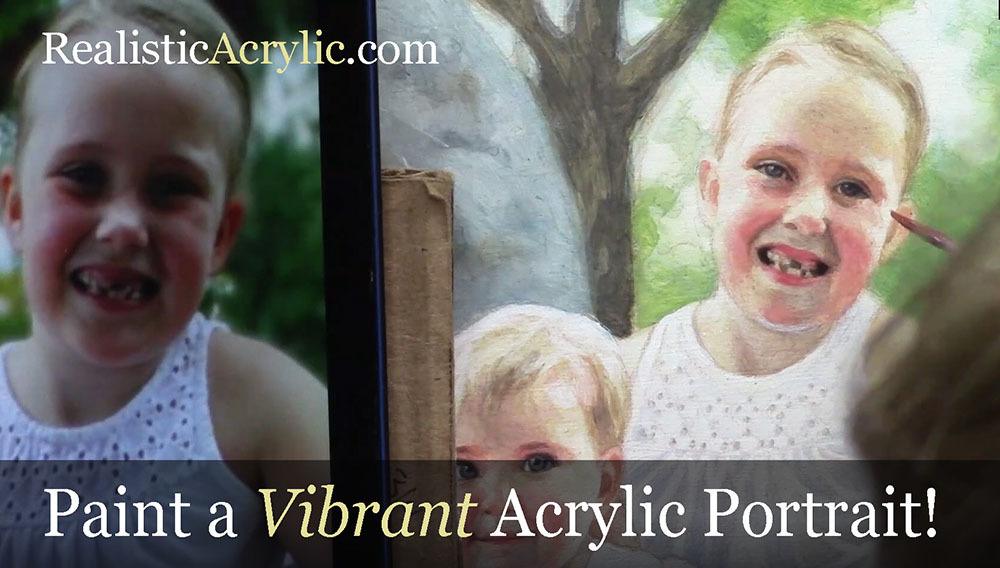
Step-by-Step Journey of Painting a Vibrant Acrylic Portrait
How do you paint an acrylic portrait that looks alive?
In this video, I share how I painted an 11″ x 14″ portrait of three beautiful children, using the classical glazing technique.
This is not a time-lapse video, but rather real-time snippets of my studio process, step-by-step, with explanations of what I’m doing. I share all the tips I can within about 20 minutes so that you can learn to paint an amazing acrylic portrait that you can give as a gift or even do for a living!
This tutorial shows the entire process of painting a portrait. Here are the steps I show in this tutorial:
- Sketch the portrait.
- Seal in the sketch.
- Block in the initial values
- Develop contrast, depth, and skin tones
- Add final nuances, details and finish.
Watch the video below and happy painting! 🙂
Of course, I always love to hear from you. Please let me know how this video helps.
Also, do you have a question about your portrait that I could answer for you? Let me know in the comments below!
Yours for Better Portraits,
![]()
If you found this post helpful or encouraging, would you send it on ahead? Let others know with the share buttons below. I’d love to hear your comments. Thank you so much!
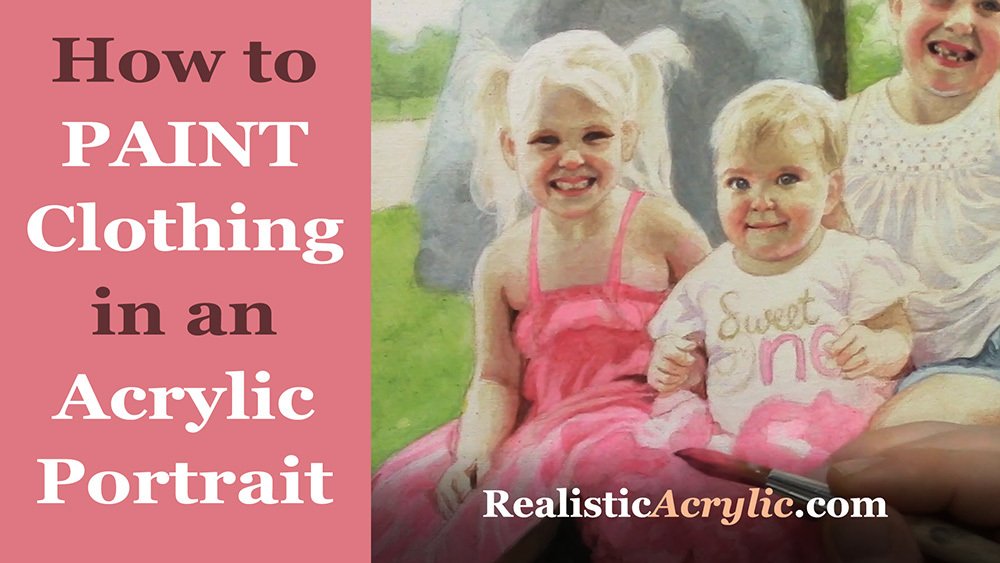
How to Paint Clothing in an Acrylic Portrait
How do you paint clothing in an acrylic portrait so it looks realistic?
As portrait artists, we give attention to many things—an accurate likeness, lifelike facial features, spot-on skin tones, that we often forget a vital part of a good painting: realistic clothing. Being able to paint clothing well can really make or break your portrait.
In this video tutorial, I’m going to show you how to use the precise placement of layers to mimic the look of folds in fabric. I’ll show you what colors to use for shadows, mid-tones and highlights and why.
For this particular demo, I am using an 11 x 14 acrylic portrait I did of three children as an example. One girl has a very detailed pink dress that creates complex and interesting shapes within the shadows. That’s what we will be painting today.
Have you found any techniques for painting clothing realistically in acrylic? Let me know below, in the comments!
I hope you found this tutorial helpful. Please visit again and I’ll be sharing more useful acrylic portrait painting tips with you!
Look forward to sharing more tips and tutorials with you.
Yours for Better Portraits,
![]()
If you found this post helpful or encouraging, would you send it on ahead? Let others know with the share buttons below. I’d love to hear your comments. Thank you so much!
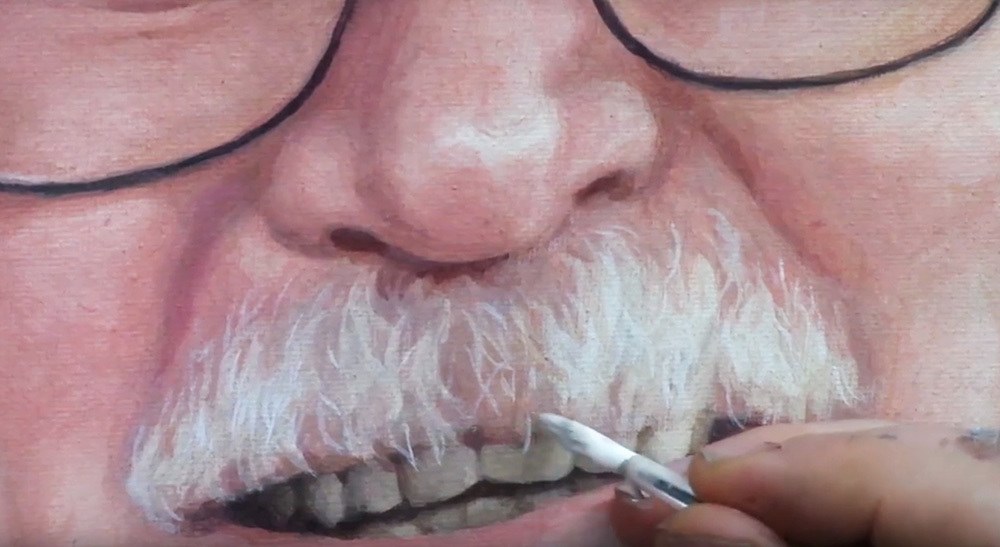
How to Paint a Mustache in an Acrylic Portrait
Painting mustaches, beards, hair of any kind of acrylic painting can be tricky.
Capturing facial hair accurately is a very important part of making your portrait look realistic. Let me show you how to add detail to a mustache in an acrylic portrait in this quick video tutorial.
Let me know, in the comments, how this video helps!
What techniques have YOU used to paint mustaches and facial hair in your acrylic portrait?
Look forward to sharing more tips and tutorials with you.
Yours for Better Portraits,
![]()
If you found this post helpful or encouraging, would you send it on ahead? Let others know with the share buttons below. I’d love to hear your comments. Thank you so much!
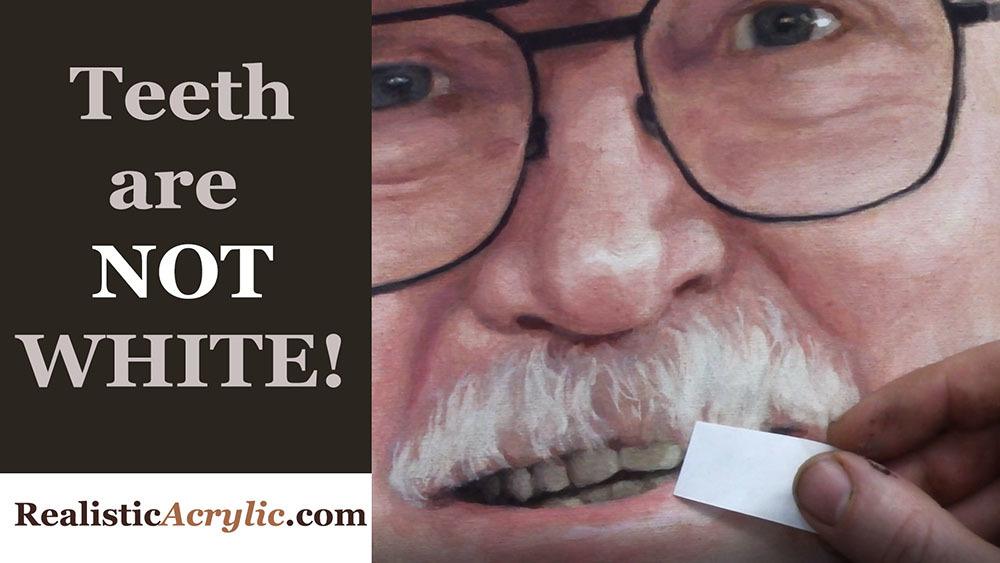
Why You Shouldn’t Paint Teeth White in Your Acrylic Portrait
Let me show you how to instantly improve your acrylic portrait by changing one little thing.
Don’t paint the teeth white.
When I critique portraits for beginning artists, one of the things I often see is teeth that are white. It detracts from the realism. Let me show you why in this super quick video…
As you can see, teeth are darker value, and you can often achieve it by using a mixture of raw umber and titanium white for the shadows, raw sienna-titanium white for the mid-tones and titanium white-slight bit of indian yellow only for the highlights.
It all comes down to painting correct tonal value–that is, the correct level of light and dark. If you’d like a tool to help you with that, then I have something for you…
I created a tool that you can use to measure the tonal value of any area of your portrait in question against your reference photo. I call it the “Value Checker.” Download and print a copy for yourself today and apply it to the portrait you are currently working on. And you will see an immediate improvement in the realism!
Get the full-resolution 8 1/2″ x 11″ version below…
Get the Value Checker ToolLet me know how this helps! What did you think of this tip on NOT painting teeth white? Did it surprise you?
I’d love to hear how your art journey is going. Shoot me an email and let me know. Or leave a comment. Be blessed in your portrait painting!
Yours for Better Portraits,
![]()
Matt
If you found this post helpful or encouraging, would you send it on ahead? Let others know with the share buttons below. I’d love to hear your comments. Thank you so much!
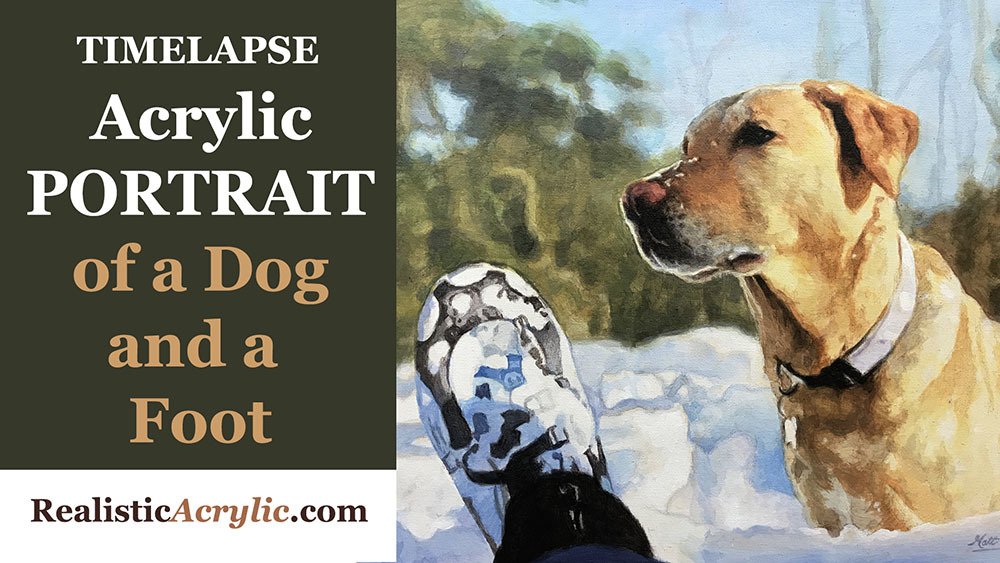
Acrylic Portrait of a Dog and a Foot: Time-Lapse
Let me show you how the acrylic glazing technique works, in a quick five minute video.
I’ll do that by sharing with you a recent acrylic portrait I did, capturing an experience of a woman who was hiking with her dog, and ended up laying down in the snow!
She wanted me to capture that moment of her dog and her foot shown as she snapped the photo from the ground.
This was an 11 x 14, acrylic on canvas, shown in a 5 minute- timelapse format. I painted it using the acrylic glazing technique, where we mix small amounts of paint into large amounts of clear acrylic medium to make the layers translucent, building up amazing depth and luminosity.
You can watch the video below…
I hope that this will inspire you in your own painting.
You can take it slow and easy, working the entire canvas in stages. You don’t have to get it right in the first layer. Rather, you can slowly “steer the ship” to the right destination. You adjust for any mistakes and build on your successes in each additional layer.
Enjoy!
Yours for Better Portraits,
![]()
If you found this post helpful or encouraging, would you send it on ahead? Let others know with the share buttons below. I’d love to hear your comments. Thank you so much!

